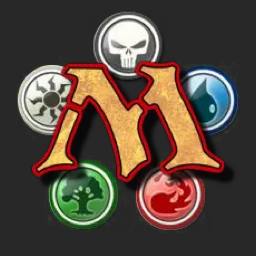A shower thought which applies not specifically to MTG, as it would obviously be a different game.
What problem does this idea try to solve?
Balancing. It is hard to balance every card during design phase (or even impossible, as can be shown), which results in some overpowered cards which make the game less fair.
How?
Supply and demand. A card which is played often (by many players, in many games) has it’s mana cost increased slightly. A card which is played rarely becomes cheaper.
Implications
This is probably not feasible with most mana costs sitting in the 1-digit-range. We can’t make a 2-cost card “slightly” cheaper. So we would either need a mana system which works with decimals (e.g. 3.1415 CMC), or raise the integer system to a higher plateau (e.g. 314 CMC)
It’s also only contemplable in digital versions, where a server can monitor every card drop, and adjust costs accordingly.
A big drawback is that your deck’s costs can change over night (or even between consecutive games), forcing players to edit their decks more frequently. A partial solution could be a notification system, and/or scheduling the recalculations to a slower frequency, like once per week or once per month.
A big advantage is that we now have an impartial Big Brother watching the balancing. Humans can err, crowds and echo chambers even more so. When people complain about an imbalanced card, is their cause justified or is it just a small but loud minority? Monitoring the cold hard data seems like a better way, and automated problem solving likewise.
What are your thoughts on this idea? Do you know another TCG which applies something similar?
One obvious problem would be that some cards are good no matter the cost. I’m going to reanimate an Emrakul even if the card costs 40 mana. Manaless dredge will still be manaless.
In some formats, this would be an excessively obtuse ban list. Obviously oversimplifying, if anything with mana value 4 or higher is utterly unplayable in Modern, any popular cards that “price out” is effectively just banned. People are playing Llanowar Elves to hit 3 mana on turn 2 for a Stone Rain or something. If the price of either changes, whether up or down, that just kills the point of trying to play them.
Could this work in a game that’s explicitly designed around live market prices? Yeah, I’m sure NFT games are ready for their comeback :P.
And now, I present without comment that time Valve tried dynamic pricing in Counter-Strike: Source and people could spam buy cheap guns until the server crashed.
One obvious problem would be that some cards are good no matter the cost. I’m going to reanimate an Emrakul even if the card costs 40 mana. Manaless dredge will still be manaless.
Excellent point. Yeah, some things exist which are already kind of broken and could be exploited further. Maybe more generally, MTG uses CMC to balance cards, but also many other aspects (comes into play tapped, draw a card/gain life on enter, …). So only changing mana cost affects the balancing of different cards differently.
Yes, Llanowar Elves. A silly result could be that people use equivalents (like Elvish Mystic) while the “original” is too expensive. But probably, all ramp cards would probably become more expensive as long as they do the job. Which makes ramp cards kind of pointless, as you point out.
Right, two good objections and a funny video. I like it, thanks.
I was struggling to figure out how to express another problem, but I just thought of how to say it. This deeply entrenches metagaming into the game’s formats, since competitive players will even more greatly want to keep secret strategies in their pockets so the wider scene only finds out after they’ve already reaped the benefits.
Basically, it’s the Magic version of arbitrage. Everyone in Modern is sleeping on Séance, so you keep quiet about your Séance brew until it’s Pro Tour time and you get to cheese wins with an undercosted Séance.
Tangent time! During Pro Tour Amonkhet, there was a cheesy WU snake deck in draft. Some of the competitors expected Slither Blade to be badly underpicked, so forced decks full of those and Trials of Solidarity. It worked. Once this archetype went public, it stopped working because people were actually trying to pick that snake now. As far as I know, there was no other deck for Slither Blade, so this was basically insider metagame trading.
Okay, okay, paragraphs. I know you said this was about more than just Magic, but I don’t have enough confidence in my game design or macroeconomics knowledge to say anything insightful in that regard. I mean, some board games have auctions.
Are you familiar with the MTGO format Penny Dreadful?
Basically, any card that was worth $0.01 or less in the preceding season is legal in the current one. It’s an interesting system that, in practice, works similarly to what you’re proposing, except with a ban list rather than mana cost. The cards aren’t likely to fluctuate in price based on external influences (it’s rare that a $0.01 card becomes such a breakout hit in another format that its price goes up, though it does happen on rare occasion) - usually it’s the Penny Dreadful format itself that causes those market fluctuations. If a card is popular enough in that format that it starts seeing heavy play, the price often dips up above $0.01 and it becomes illegal in the next season as a matter of course.
The rough analog to what you’re proposing would be making any card that saw more than a specific percentage of play banned, but if you’re determined to use mana costs, you could (hypothetically, not practically) increase all mana production and costs by a factor of 1000 (so a basic forest taps for 1000x green, and a llanowar elf costs 1000 green), and let costs fluctuate very slightly as a result, but it wouldn’t functionally change much. Spending (the equivalent of) 0.942 of a mana on something isn’t functionally different in almost all cases from spending 1 mana on it. By making prices only fluctuate on fixed intervals, say, weekly, you’d and only take play within the past, say, 2-3 weeks into account when determining cost, you’d be able to reach equilibrium while also not necessitating frequent deck changes (certainly not match to match).
Are you familiar with the MTGO format Penny Dreadful?
I was not, thanks! Haha, yes, that is a pretty good implementation of the core idea, with very little overhead. It was funny to read about the implications this can have on real world market prices.
Spending (the equivalent of) 0.942 of a mana on something isn’t functionally different in almost all cases from spending 1 mana on it.
You’re right, it does not work so well with the current mana system. Because you still bring whole numbers of lands into play. When those lands produce 1000 mana, you still have either 1000 or 2000 mana, so the 0s are mostly redundant. It would still make a difference for carts which have a significant margin (so that you can play 3 unpopular cards for the cost of 2 regular, or 2 popular for the cost of 3 regular). But for small changes, as you say, it wouldn’t functionally change much.
I like the fine granularity of the cost-balancing approach. Though the binary ban/legalize mechanic of Penny Dreadful might be accurate enough.
If the mana produced by lands also fluctuated based on their usage, it might be more interesting. Things like enters-tapped uncommons might tap for like, 1.2 mana, whereas shocks and triomes might tap for 0.92 or something. You could bypass the downside of playing cards that were cost-boosted by playing a shitty manabase that had its output similarly boosted, or vice versa.
Personally one of the things I like about MTG is that they primarily ban cards as a solution. Other games change rules, have errata, or simply remove cards from existence. Banning cards maintains the functionality of both the game and card. It enables discussion about banned cards coming back, you can have no ban list tournaments, or even try gauntlets of banned cards to better understand them. Changing the text of the card makes that impossible, digital only card games can just remove the card from your collection, and discussing which years’ ruleset to use as a group is way harder than agreeing on a banlist. Especially for a game like MTG which has new cards coming out almost every other month, I think it’s the best way for designers to push boundaries but still let players dicuss their decisions
Actual arguments aside: capitalism doesn’t magically produce the results that its proponents say that it does and introducing it as a solution almost certainly never produces the intended results. Unless the intendes result is “one asshole figures out how to game the system and make it worse for everyone who isn’t him.” Which unsurprisingly, is not what I want from my card game
You’re right, this would be very unpractical for analogue play. I thought it has to be digital. But then another person in this post pointed out that Penny Dreadful is a thing, which seems to work with printed cards, although it has it’s banlist change from season to season. Granted, checking what is banned/legal (and modifying your deck accordingly) is much simpler than checking each mana cost.
I’m not a fan of capitalism, it was just a metaphor to convey they mechanic. Now that I think closer about this, they even differ in that. I did not have “supply and demand” in mind, since the supply in a digital TCG is essentially infinite. It’s more about rating cards based on their popularity, whereas popular items in capitalism can be dirt cheap (e.g. tap water). One of the other major differences is that in capitalism, people can reinvest their capital to gain more capital. I don’t see how that could be a thing in ‘my’ idea. But the system would need some protection against deliberate manipulationg. Yet another person proposed a solution to this; only monitor tournament decks.
I hear what you’re saying but all of this dances around the inherent reality of the game that we all play. There are a lot of people who have full time jobs making sure we enjoy playing this game. Divorcing a TCG/CCG from capitalism is impossible as long as the party that runs the system exists for profit. The One Ring is an incredible card specifically because capitalism pushed it to be one
What I think you’re proposing is an open source card game, developed by a like minded group of individuals who want to make the most fun game possible utilizing behavioral-economic trends as self regulating measures. Which honestly sounds incredible to me, but unfortunately I think that game will only ever exist once we invent Star Trek style replicators and live in a post-scarcity society
I don’t see it yet, please help me out. Maybe it helps if you can find a specific example.
Can you describe a scenario how an asshole could game that system?
Generally I think MTG is probably the most capitalism-ruined game. It annoyed me much when starting to play as a teenager. Whenever a friend upgraded their deck, others were kind of forced to spend money as well. Because the rich guy had access to all the powerful cards (= relatively low mana cost for their effect / strong effect for their CMC). Isn’t that exactly what a balancing approach would alleviate? Everyone has access to all cards, and all cards receive a CMC which matches how much players value it.
I don’t play Magic—or any TCGs, but I thought this was interesting and had done feedback on the idea. I don’t have the experience necessary to weigh in on the substantive question of whether it’s a good idea or not, but I do think the logistical issues you raised would not be nearly so problematic.
A big drawback is that your deck’s costs can change over night (or even between consecutive games)
You would at a bare minimum not change the costs for players in a tournament in the middle of the tournament. And now generally, I think rather than dynamic cost changes, you would probably be better off doing seasonal patches like a video game’s balance. Maybe that’s monthly, maybe every 3 months. But certainly not every day or even every week.
It’s also only contemplable in digital versions, where a server can monitor every card drop
Not necessarily, though that would make it much easier. You couldn’t count every single casual game anyone plays, but for games with a certain level of formality or weight to them you could borrow from chess. In chess games that don’t have a very tight time control, players write down both their and their opponent’s moves every turn. These are then compared to ensure they match, and fed into global chess databases. It works well in chess because of the convenience of chess notation, but aside from some difficulties with the length of card names it could easily be brought into a TCG.
But separate from that, you may not even need that level of granularity. Wouldn’t someone merely putting the card in their deck to play be sufficient? Registering what cards are in your deck is, I believe, already a thing in other games’ tournaments. Does Magic not do the same? Because that should be sufficient, at least in the highest level of play, to determine whether players have the intent to use a card because they believe its value is appropriate or cheap.
seasonal patches like a video game’s balance
That makes much more sense, yes.
Your other thoughts are also good and welcome. Yeah, tracking what cards tournament players include is probably sufficient!
I would say there may also be some value in seeing what actually gets played. Especially among middle level players who might not have perfectly aligned their decks with how they play. For example, a player might think they want to play a card and put it in their deck, but then find out it’s actually too expensive to play in the game once they draw it, so it stays in their hand.




